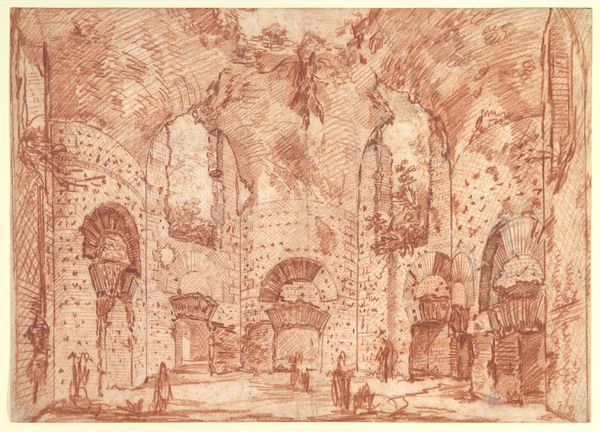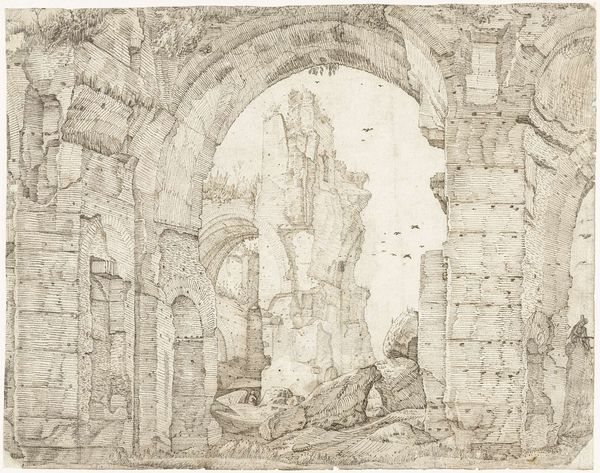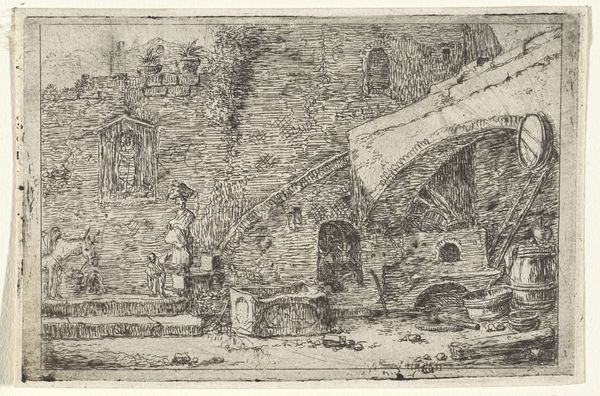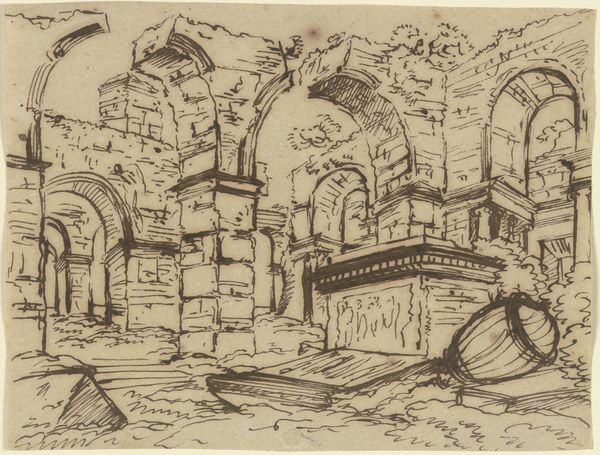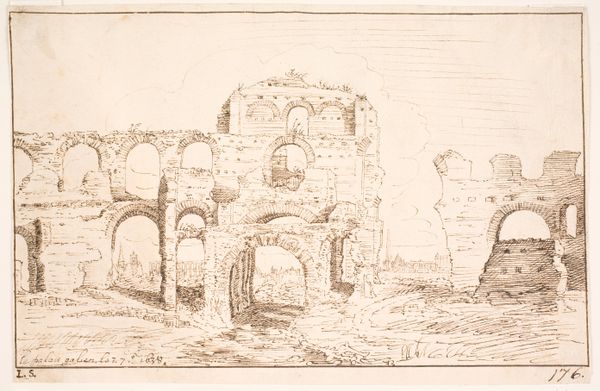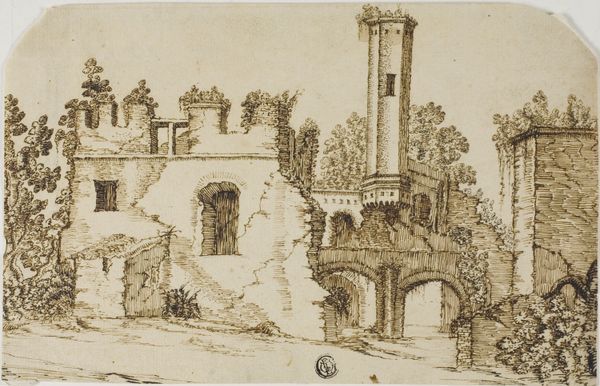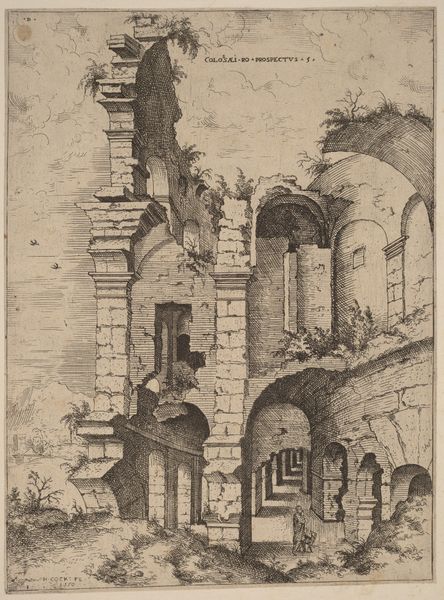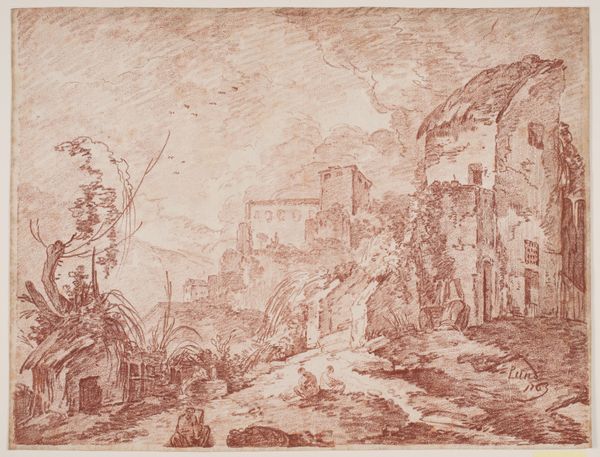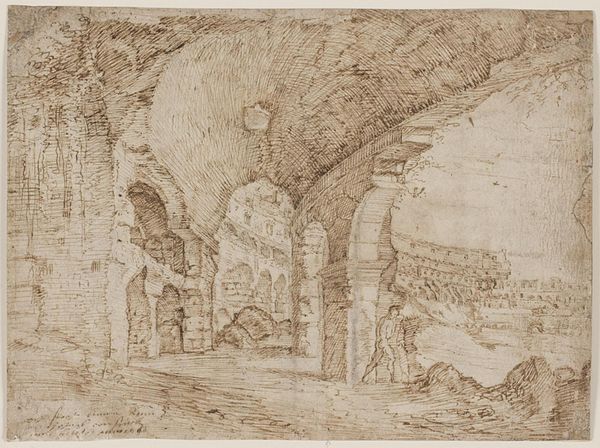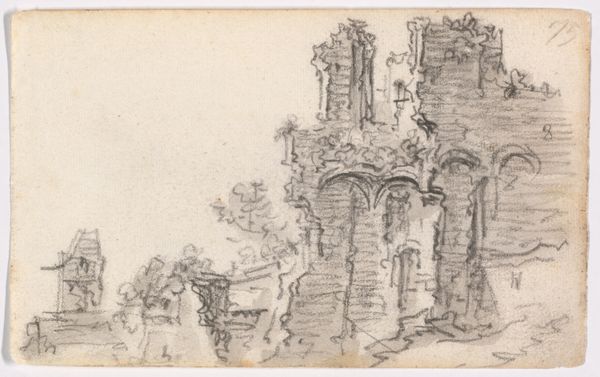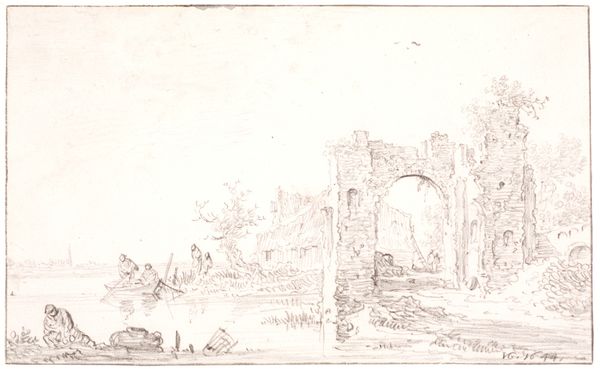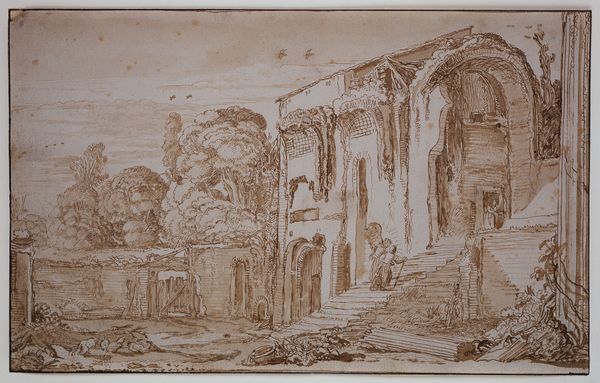
drawing, print, etching, ink
#
drawing
#
ink painting
# print
#
etching
#
perspective
#
ink
#
ancient-mediterranean
#
cityscape
#
history-painting
Dimensions: overall: 38.9 × 53.8 cm (15 5/16 × 21 3/16 in.)
Copyright: National Gallery of Art: CC0 1.0
Editor: Here we have Piranesi's "The 'Canopus' of the Villa Adriana at Tivoli," created in 1776. It's a red chalk drawing, really capturing the ruinous state of the villa. There’s a sense of melancholy, but also a real grandeur in its decay. What stands out to you in this work? Curator: The emotional response you felt is very relevant. For me, Piranesi’s vision encapsulates not just the physical remnants of the Roman Empire, but the fraught relationship between power, history, and representation. He presents these ruins not simply as objective records but as active agents in shaping the present. Notice how he plays with perspective and scale? What might that suggest to you? Editor: It almost feels like a stage set. The figures seem dwarfed by the architecture. Curator: Exactly! The diminutive figures emphasize the overwhelming power and historical weight of the Roman past. And consider this: Piranesi was working in a period of intense political and social upheaval. These romanticized depictions of Roman grandeur can be seen as critiques of contemporary power structures, prompting reflections on how societies rise, fall, and are remembered - or not - through their physical legacy. The print becomes a stage on which Piranesi challenges viewers to consider our role in shaping and inheriting the past. Who do you think might have bought prints of these images? Editor: People who wanted to show off their knowledge, maybe? Or as souvenirs… Curator: Perhaps. And consider that the ability to engage with this image—to collect, to display—speaks to power and privilege. To contemplate this aestheticized image of ruination without accounting for its intersection with issues of wealth and access… It limits our understanding of Piranesi’s impact. Editor: So it’s not just about pretty ruins; it’s about who gets to define them and what they represent. Thanks! This really makes me think about the politics embedded in these romantic depictions of the past. Curator: Precisely. By examining the historical and social context, we can better understand the layers of meaning Piranesi wove into his work and see it beyond just a landscape drawing.
Comments
No comments
Be the first to comment and join the conversation on the ultimate creative platform.
